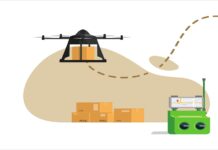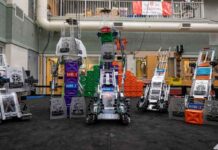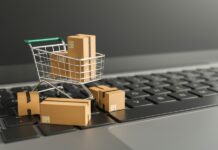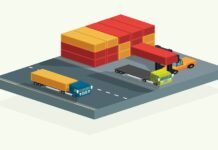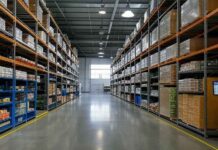The Impact of Digital Twins on Supply Chain Efficiency and Performance Insights
Digital Twins – intriguing, right? It’s not a clone of a cyborg from a science-fiction movie, but a revolutionary technology. A technology that’s reshaping the landscape of Supply Chain Management. We are not just talking numbers; we are expounding the music of efficiency, the rhythm of performance insights. Stay with us. You’ll enjoy the symphony.
Understanding Digital Twins
Listen to this! In the simplest terms, a digital twin is a virtual replica of a physical asset. It’s a bridge between the physical and digital world, an interplay of data, machine learning, and algorithms. Imagine a mirror, reflecting not just what you see, but everything you don’t. That’s a digital twin – it’s similar, yet different.
But hold on! It’s not just a static reflection. Digital twins dynamically update and change as their physical counterparts grow and transform. It’s a living model, breathing in data, exhaling insights. Now, isn’t that fascinating?
But how does it work? How does this virtual echo mimic its physical twin? Under the hood, it’s fed by sensors attached to the physical asset. These sensors constantly gather data about the asset’s condition, its environment, and its performance. The digital twin digests these data morsels, analyzing, learning, and evolving.
In essence, a digital twin is a powerful tool. It’s a key that unlocks the door to predictive analysis, preventative maintenance, and performance optimization. But let’s not get lost in the technical weeds. Let’s see how this wonderful tool sings in the world of Supply Chain Management.
Application of Digital Twins in the Supply Chain
- Inventory Management: With digital twins, we can create virtual replicas of our inventories. Now imagine this, we can predict demand, manage supply, and minimize excess all with a few clicks. No more manual tracking, no more guesswork. Just smooth sailing all the way.
- Warehouse Management: Ever dreamt of a warehouse that manages itself? With digital twins, it’s possible. We can simulate different layouts, test various strategies, and optimize operations without disrupting the actual warehouse. It’s trial and error without the error.
- Transportation Optimization: Digital twins are not just confined to static assets. They can mimic moving trucks, ships, and planes. They can help us optimize routes, reduce fuel consumption, and ensure on-time deliveries.
- Risk Management: Our world is unpredictable. Disruptions are part and parcel of the supply chain. But what if we could foresee these disruptions? With digital twins, we can simulate different risk scenarios and develop effective mitigation strategies.
- Customer Experience Improvement: At the end of the day, it’s all about the customer. By replicating the end-to-end supply chain, digital twins can help us understand and improve the customer journey. Happy customers, happy us!
Benefits of Implementing Digital Twins
Operational Efficiency
Pay attention now! By replicating the physical supply chain, digital twins enable real-time monitoring and control. It’s like having an all-seeing eye, watching every process, every movement, every fluctuation.
Predictive Maintenance
Digital twins learn and predict. They sense anomalies before they become problems. They whisper warnings before machines scream for maintenance. It’s like having a doctor on call, ready to diagnose and treat before it’s too late.
Decision Making
Decisions, decisions. They can make or break a supply chain. But with digital twins, the guesswork is replaced by data-backed insights. It’s like having a crystal ball, showing the impact of each choice, guiding the way to the best decision.
Cost Savings
In the end, it’s all about the bottom line. By enhancing efficiency, predicting maintenance, and improving decision making, digital twins significantly reduce costs. It’s like having a personal finance advisor, constantly looking for ways to save and improve the return on investment.
Challenges in Adopting Digital Twins
Don’t get us wrong. We are not painting an overly rosy picture here. Adopting digital twins is not a walk in the park. It requires significant investment. It’s not just about money, but also time, effort, and resources. You see, creating a digital twin isn’t a one-off task. It’s a continuous effort of feeding data, refining models, and updating systems.
Moreover, it requires a shift in mindset. Traditional supply chains are linear and siloed. But digital twins thrive in an interconnected and collaborative environment. So, embracing digital twins means embracing change, and as we all know, change is hard.
Then there’s the challenge of data security and privacy. Digital twins consume immense amount of data. So, appropriate measures need to be in place to protect this data from breaches and misuse.
To add to this, there’s also the challenge of integration. Digital twins need to integrate seamlessly with existing systems and processes. This requires careful planning and meticulous execution.
And lastly, there’s the question of finding the right talent. To harness the full potential of digital twins, we need a team skilled in data analytics, machine learning, and IoT. As demand for these skills is skyrocketing, finding and retaining such talent is no small feat.
Case Studies of Successful Implementation
- A leading automobile manufacturer leveraged digital twins to optimize its factory operations. By simulating different layouts and workflows, they reduced production time by 20% and improved product quality significantly.
- A global logistics company used digital twins to simulate and optimize its delivery routes. The result – a 15% reduction in fuel consumption and a 10% improvement in on-time deliveries.
- A consumer goods company implemented digital twins to manage its supply and demand. By accurately predicting demand patterns, they reduced inventory costs by 30% and increased customer satisfaction by 25%.
Enhancing Supply Chain Efficiency with Digital Twins
Efficiency – it’s the holy grail of supply chain management. And digital twins – they are the chalice that holds it. By creating a mirror image of the supply chain, digital twins enable us to see what’s working and what’s not. It’s like having a magnifying glass that highlights each bottleneck, each inefficiency.
But it doesn’t stop at spotting. It goes a step further. It simulates different scenarios, tests different strategies, and pinpoints the most efficient path. It’s like having a compass that always points towards operational excellence.
Digital twins also bring transparency. By integrating data from all nodes, they provide a holistic view of the supply chain. It’s like having a panoramic lens, capturing the big picture and the minute details.
Moreover, digital twins enable proactive decision making. By predicting future scenarios, they allow us to plan ahead and act before it’s too late. It’s like having a time machine, peeking into the future, helping us stay one step ahead.
In a nutshell, digital twins are a boon for supply chain efficiency. They are the bridge that connects the world of what is with the world of what could be.
Leveraging Performance Insights from Digital Twins
Performance insights – that’s the gold digital twins mine. But how do they do it? How do they transform raw data into nuggets of valuable insights? It’s a three-step dance – observe, analyze, and learn.
First, digital twins observe. They gather tons of data from their physical counterparts. It’s like having a thousand eyes, observing every process, every interaction, every outcome.
Next, they analyze. They sift through the data, find patterns, spot trends. It’s like having a Sherlock Holmes, investigating each clue, solving the mystery that is performance.
Finally, they learn. Based on the analysis, they learn to predict, to optimize, to improve. It’s like having an Einstein, constantly experimenting, constantly discovering.
But wait! The dance doesn’t end there. It’s a continuous loop, a cyclical process. Observe, analyze, learn, repeat. That’s the mantra of digital twins. That’s the rhythm, the music they create.
Hence, to leverage these insights, we need to tune into this music. Listen, adapt, and act. That’s how we dance to the tune of digital twins. That’s how we transform performance insights into performance improvement.
Future Trends in Digital Twins for Supply Chain Management
Enough said about the present. Let’s take a leap into the future. The future of digital twins in supply chain management. Buckle up, we are in for a thrilling ride!
- AI-Driven Digital Twins: Today, digital twins are intelligent. Tomorrow, they’ll be genius. With advancements in AI, they’ll become more predictive, more intuitive. They won’t just mirror the physical world; they’ll go beyond, exploring the realm of possibilities.
- Edge Computing: As the volume of data increases, so does the need for speed and security. Enter edge computing. By processing data near the source, it will make digital twins faster and more secure.
- Digital Thread: From digital twins, we’ll move towards digital threads. Instead of individual models, we’ll have an interconnected web, encompassing the entire supply chain. It’s the next step, the evolution of digital twins.
Conclusion
Digital Twins – they’re more than just a buzzword. They’re a symbol of a new era. An era where data meets design, reality meets virtuality, and efficiency meets insight. Adopting digital twins is not just a technological shift but a strategic leap. A leap towards a smarter, more efficient, and more resilient supply chain.
So let’s embrace this change. Let’s play the music of digital twins. And let’s dance to the rhythm of efficiency and performance insights. After all, isn’t that the ultimate symphony of supply chain management?



